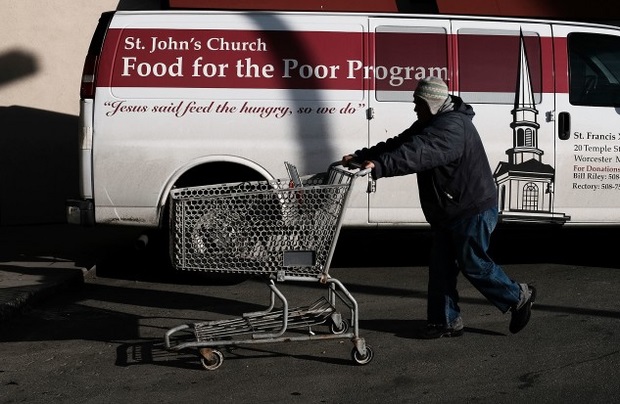Loss of USDA Funds for Distribution Threatens Food Bank Aid
- Food banks may curtail surplus food delivery during shutdown
- Federal program provides no-cost foods to households at no cost
The Agriculture Department will continue funding a food assistance program during the government shutdown, but it won’t help pay for food banks to distribute that food, a stance one group says will hurt the program’s effectiveness.
“Food banks are still distributing food, but are running up a balance sheet,” Carrie Calvert, managing director of government relations at Feeding America, said in an interview. The Chicago-based group represents a nationwide network of food banks.
The USDA said Tuesday it would continue funding food deliveries through February, but wouldn’t give any additional money for administrative costs, including distribution, until the government shutdown ends.
“If the shutdown were to stop in a couple of weeks we can weather that because our cash flow is strong enough, but if it were to go on another month we would have to start looking closely at how the heck do we make this work,” said David Krepcho, president at Second Harvest food bank in central Florida.

The Emergency Food Assistance Program is a federal program that helps supplement the diets of low-income individuals, including the elderly, by providing them with emergency food and nutrition assistance at no cost.
While food banks praised the USDA for funding the program, it would be “horrible if food is not being delivered,” said Calvert.
Under the program, USDA foods are made available to the states, which provide the food to local agencies, usually food banks, which in turn, distribute the food to soup kitchens and food pantries that serve the public directly.
Second Harvest operates 10 programs at its facility and if this shutdown continues “we may have to start making trade-offs and shutting down some programs,” Krepcho said.
FURLOUGHED FAMILIES
Calvert said food banks are trying to help furloughed federal workers who are in need of extra food and they would rather figure out a plan to qualify those households for their programs instead of worrying about costs for transportation and storage.
“Agencies are having federal workers bring in their ID to waive the normal income limit to receive assistance and donated food,” Calvert said. “This doesn’t come at a great time.”
A fight over President Donald Trump’s demand for a border wall has led to a partial government shutdown, which is now in its third week. More than a dozen major departments and agencies have been closed since Dec. 22.
Additionally, food banks expect to get three times the amount of the 700 million pounds they typically receive in emergency food aid due to the purchases from the trade-based Food Purchase and Distribution Program, which is aimed at helping producers caught in the middle of Trump’s trade spat with China.
“I can’t say here and now what might be but something has got to give,” said Krepcho.
To contact the reporter on this story: Teaganne Finn in Washington, D.C. at tfinn@bgov.com
To contact the editors responsible for this story: Paul Hendrie at phendrie@bgov.com; Jonathan Nicholson at jnicholson@bgov.com